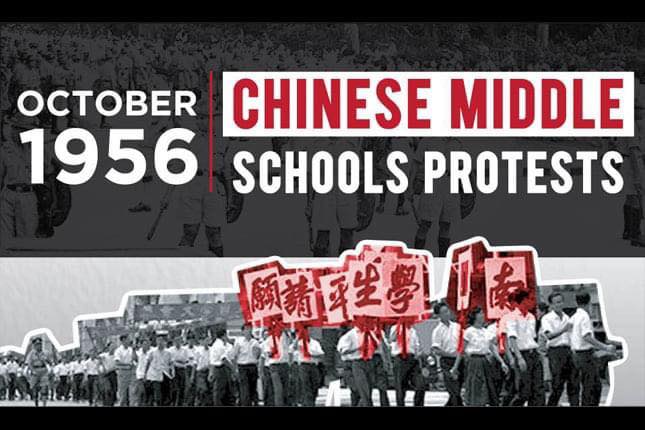Chinese Middle Schools Protests
The Communist Party of Malaya (CPM) was formed in 1930 and began establishing links with labour unions in Singapore and Malaya. While it was declared illegal by the British after it launched an armed insurgency in 1948, official accounts show the CPM revived its “united front” strategy of subverting trade unions and student bodies, as well as political parties, with the goal of a communist Singapore, and then Malaya. The state of social chaos and instability made freshly post-war Singapore fertile ground for agitation. By the 1950s, the CPM had gained significant traction in Singapore.

Wary of foreign influences filtering downstream, then-Chief Minister Lim Yew Hock took tough measures. In 1956, hundreds of activists were arrested, with publications, trade unions, cultural organisations and middle school unions, such as the Singapore Chinese Middle Schools Students’ Union, banned.
The crackdown drew the ire of many Chinese middle school students. Supported by pro-communist trade unions and organisations, about 5,000 students took over control of their schools on 25 September 1956, staying on the premises and picketing against the government for two weeks. When police came to evict them, the students rioted.
#OnThisDay in 1956 (25 October), they began rampaging island-wide for five days, resulting in 13 deaths and 100 people injured. 132 vehicles and five buildings were damaged, including an English school. The protests were quelled only after police raided the premises of several pro-communist unions and arrested some hundreds of people, including pro-communist unionists and leaders.
📷: Roots / National Heritage Board References: Roots; HistorySG; Seven Hundred Years: A History of Singapore; The Straits Times, 28 October 1956 and 13 April 2015

